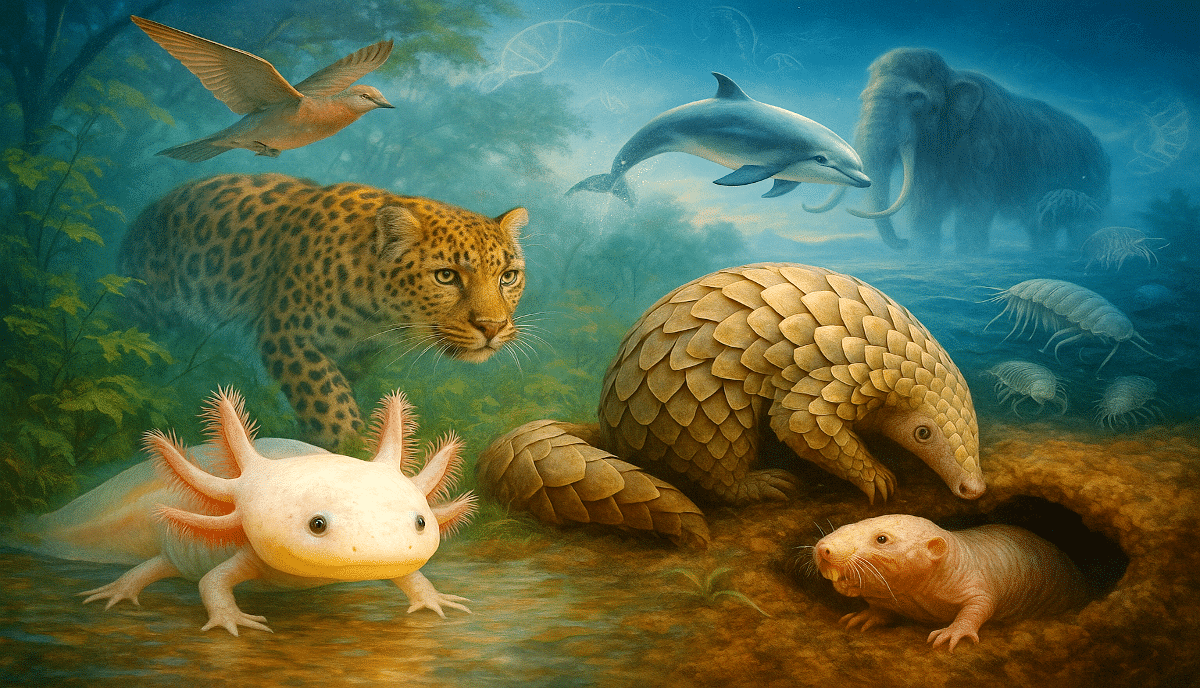Animals You Didn’t Know Existed: Discover the World’s Weird-Looking and Rare Creatures
Estimated reading time: 7 minutes
Key Takeaways
- Rare animals play a critical role in their ecosystems and often require conservation efforts.
- Weird-looking creatures can offer insights into biology and evolutionary adaptations.
- Several species are on the brink of extinction, highlighting the urgency of conservation.
- Exploration continues to reveal unknown wild creatures, reminding us of the world’s vast biodiversity.
- Understanding extinct animals helps us learn from past mistakes and the impacts of human activity.
Table of contents
Overview of Rare Animals
Rare animals are species that exist in low numbers and often have specific habitat requirements, making them less visible to the general public. These animals can have unique characteristics or specialized needs that contribute to their rarity, thus making conservation efforts essential. For instance, because of their limited populations, these species are often vulnerable to environmental changes.
The crucial roles of rare animals in ecosystem maintenance cannot be overstated. They often fulfill important ecological functions, such as:
- Pollination: Rare species can be key pollinators for many plants.
- Seed Dispersal: Certain rare animals help in seed dispersal, promoting ecosystem growth.
- Pest Control: They can maintain insect populations, preventing outbreaks that could devastate crops.
For more information, you can visit this source.
Weird-Looking Animals
The animal kingdom features a plethora of creatures whose unusual appearances not only intrigue us but also serve practical adaptations in their environments.
- Axolotl: The axolotl is a remarkable salamander known for its gill structure and the ability to regenerate limbs. It stays in its larval form throughout its life, remaining aquatic and capturing the interest of scientists and the public alike.
- Pangolin: Known for its unique scaled body, the pangolin is the most trafficked mammal globally. Its ability to roll into a ball provides defense against predators, while its long tongue is ideal for consuming ants and termites.
- Naked Mole Rat: This hairless rodent, native to East Africa, is known for its social colonies and remarkable resistance to cancer. Its subversive appearance and social structure make it a focal point of scientific study.
For more information on these unique animals and their fascinating lives, you can visit this source.
The Rarest Animals on the Planet
Some species are teetering on the edge of extinction, making their conservation a pressing global concern. Here are a few of the world’s rarest animals:
- Vaquita Porpoise: Widely considered the most endangered marine mammal, the vaquita’s population has plummeted to fewer than 20 individuals. Its survival is threatened by illegal fishing practices.
- Amur Leopard: With only around 70 individuals left, this elusive feline is a critical symbol of conservation efforts in its Russian Far East habitat.
- Sumatran Orangutan: The decline due to deforestation and hunting has left this great ape with a population under 14,000. Collaborative efforts aim to protect their fragmented habitats.
For more information on the conservation status of these and other species, you can visit this source.
Extinct Animals and Their Mystery
Extinction is a significant concern that can often stem from human activity. Learning about extinct animals sheds light on the consequences of environmental changes:
- Dodo: Once native to Mauritius, the dodo’s extinction serves as a powerful reminder of the impact human actions can have on species survival.
- Woolly Mammoth: This iconic creature faced extinction around 4,000 years ago, which has sparked interest in potential de-extinction projects through genetic research.
- Passenger Pigeon: Once numbering in the billions, the passenger pigeon’s extinction is often cited as an early warning about overhunting and habitat destruction.
For more information on the causes and consequences of extinction, you can visit this source.
Unknown Wild Creatures
Discoveries of new species continuously occur, emphasizing the undiscovered diversity still present on Earth:
- Olinguito: Discovered in 2013, this small mammal captivates researchers with its distinct characteristics and unique habitat in the Andes.
- Deep-Sea Organisms: New species such as the anglerfish and giant isopods showcase the adaptations necessary for survival in extreme depths of the ocean.
For more information on recent species discoveries, you can visit this source.
Conclusion
The world of animals is a treasure trove of mystery, showcasing not only the colorful tapestry of life but also the critical importance of conservation efforts. Whether it’s the rare animals on the planet, bizarre appearances of certain species, or stories of extinction, each underscores the delicate balance of biological existence.
By engaging with and understanding these lesser-known creatures, we can foster appreciation for the diverse wildlife that shares our planet and work collectively towards preserving it for future generations.
Call-to-Action
Have you encountered any unusual animals or rare species during your travels or explorations? We invite you to share your stories and photographs of these fascinating creatures in the comments section below. Your experiences can significantly contribute to the ongoing dialogue around wildlife conservation and underscore the importance of safeguarding the natural world.
Frequently Asked Questions
What defines a rare animal?
Rare animals are those that exist in significantly low populations and typically face threats from human activity, habitat loss, and environmental changes.
What is the importance of biodiversity?
Biodiversity is essential for ecosystem resilience, agriculture, and the overall health of the environment.
How can individuals help in conservation efforts?
Individuals can contribute by supporting conservation organizations, reducing plastic use, and spreading awareness about endangered species.
